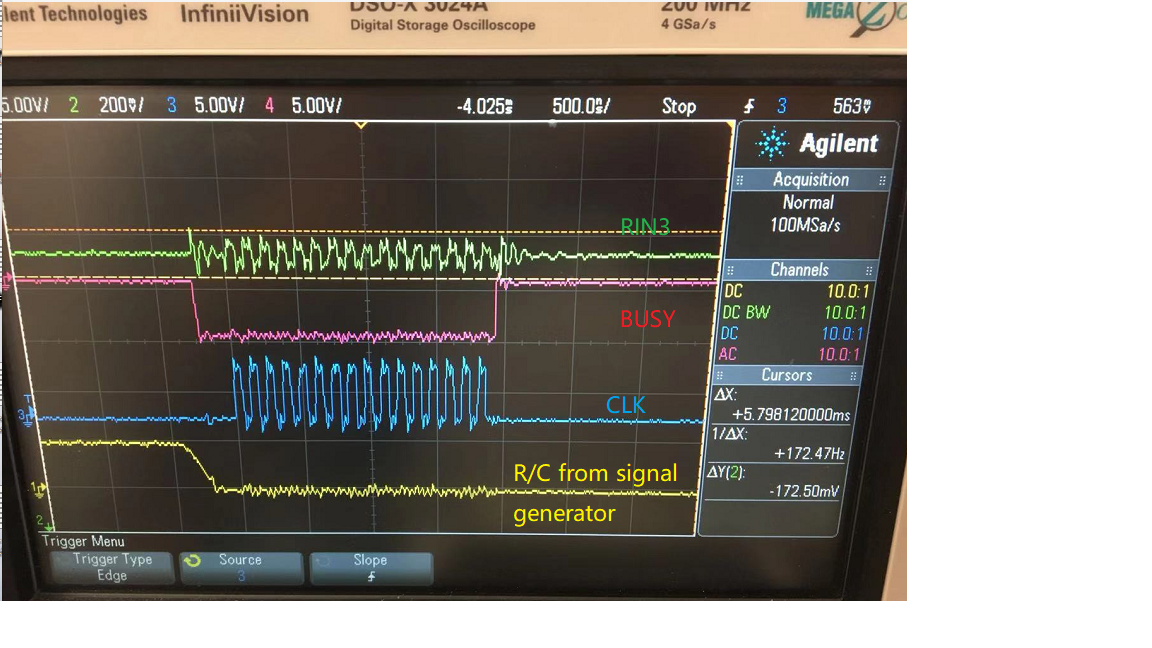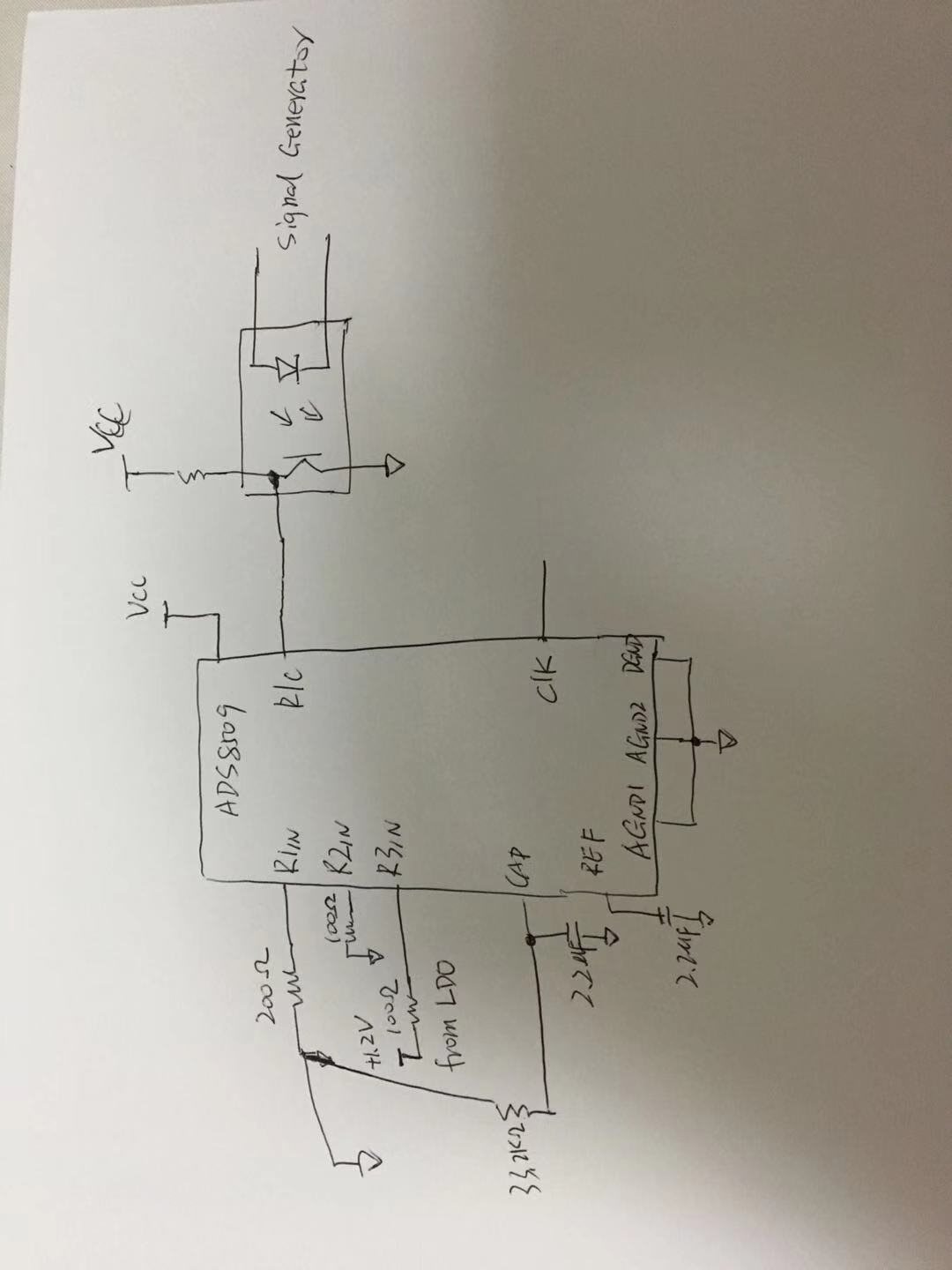Other Parts Discussed in Thread: ADS8681, ADS8685, ADS8689
Hi TI technical experts,
i met a problem when using ADS8905, it looks like crosstalk on the ADC input when the converter starting conversion or transfer data.
To debug this issue, I used a signal generator to triger the R/C through a opto-coupler, so the external GND is isolated with the ADC GND, please see attached schematic, and set the converter in internal clock mode, so i can detect the clock output, please see the picture. The ADC input started swing when R/C goes low, and was stable after the CLOCK output completed. This's weired, I don't know why, could you please advise? Thanks.



